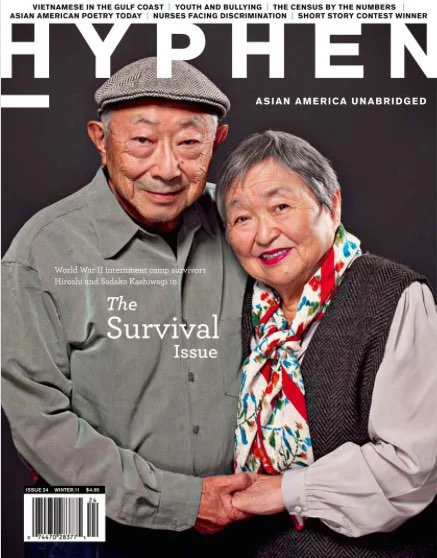
The Kashiwagi Project
Restoration and Creation
Image Source: Tamura, George. Sister Peak to Abalone Mountain. 1944.
Hiroshi Kashiwagi
Hiroshi Kashiwagi, a prolific Japanese American poet, playwright and actor, was one of the few artists of his generation to win acclaim for expressing resistance through his art to the wartime incarceration of Japanese Americans. Within the camps that the U.S. government created to incarcerate more than 120,000 immigrants and U.S. citizens, Mr. Kashiwagi and his family were among those categorized as “disloyal” through a flawed official vetting process. To “segregate” this group, the Tule Lake camp in far northern California was converted to maximum security. It became guarded by more than 1,000 military police, two-layer fencing, 28 watchtowers, machine guns and tanks.
Mr. Kashiwagi was one of more than 5,000 incarcerees, mainly at Tule Lake, who accepted a government offer to renounce their U.S. citizenship. This decision, made under pressure with little information, was one that he and most others quickly regretted and sought to undo. He was a co-founder of the Tule Lake Defense Committee, which conducted the long, difficult, successful campaign to restore reununciants’ citizenship.
When many ex-incarcerees were silent, Mr. Kashiwagi used his writing gift to advocate for justice, often by telling stories about individual lives under incarceration and its aftermath. Instrumental to his creative process was the use of a small soundbooth in the privacy of his basement, where he would speak – and sometimes scream – the words that he was writing.
Sadly, Mr. Kashiwagi passed away in 2019. He is greatly missed. He donated his treasured soundbooth for the public good. It will become a standing art piece to preserve Mr. Kashiwagi’s work and other Asian American stories of resistance, perseverance, and advocacy.
Teruko Nimura
Teruko Nimura (b. 1978, based in University Place, Washington) creates work with an interest in experiential discovery through active viewership and self reflection. Her multi-media practice includes installations, sculptural objects, layered drawings, and public art projects that consider the relationship to the body and the contextual specifics of space. She is interested in themes of interconnectedness, collective memory and trauma, cultural, racial, and female visibility, motherhood, and the climate crisis. Her varied explorations of mediums and methods are united by an emphasis on process, with the intentional use of multiples and repetition as ritualistic study. She has an appreciation for the language of materials and the vulnerability in the variations and flaws of handmade objects.
Teruko received her BFA from San Francisco Art Institute and her MFA from UT Austin. She has exhibited in the U.S., Mexico, and Canada. She was an OX-Bow School of Art Fellow (2007), a mentee artist in the City of Austin’s Launchpad program for emerging public artists (2018-19), featured in the TX Biennial (2017), and one of five Austin artists invited to create work for New York City Highline’s multi-city exhibition “New Monuments for New Cities" (2019). Since moving from Austin she was a City of Tacoma Public Art Reaching Community artist (2020) and featured in the Bellwether Arts Festival in Bellevue (2021). In addition to the multi-phase Kashiwagi Soundbooth, Teruko is currently working on a community art project for Tacoma's Greening initiative and an outdoor exhibit at the Asia Society in Houston, both to launch in 2022.




Source of Hiroshi Kashiwagi photo: Soji Kashiwagi

